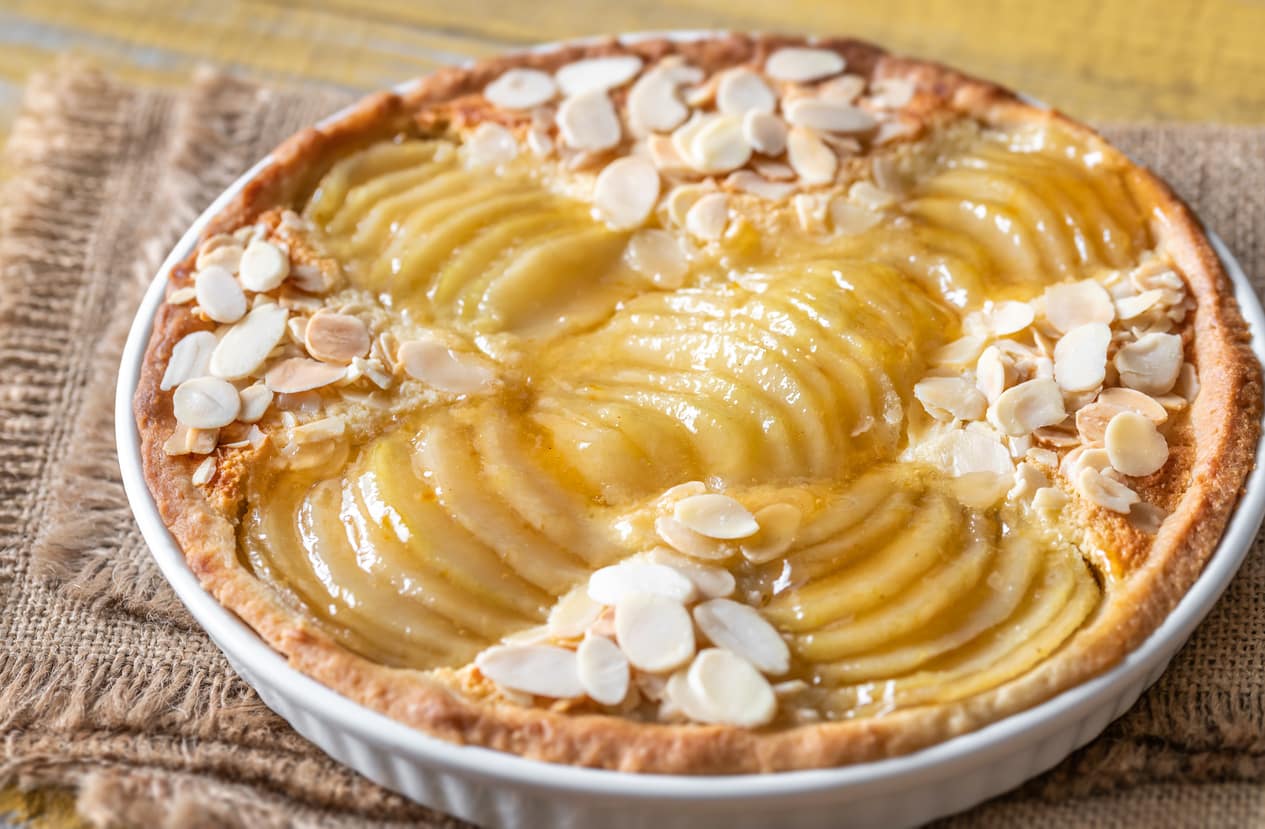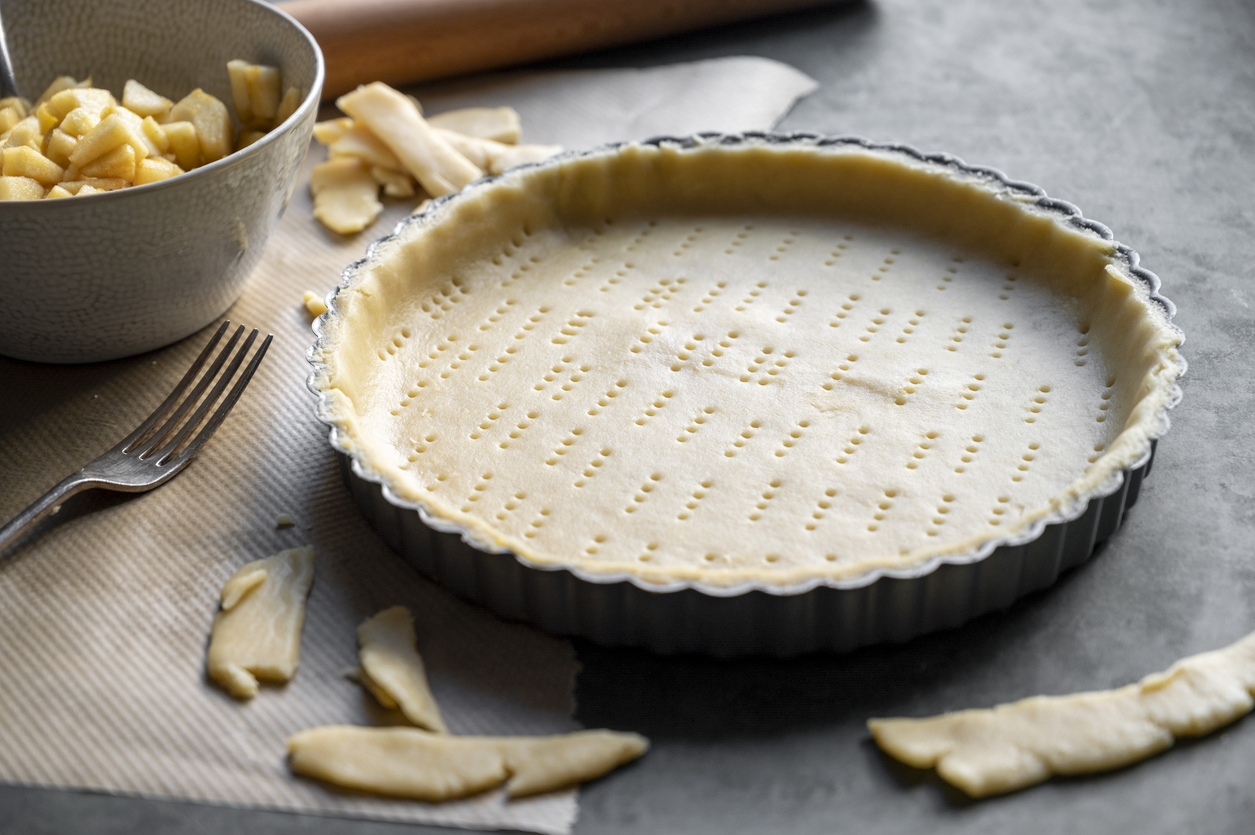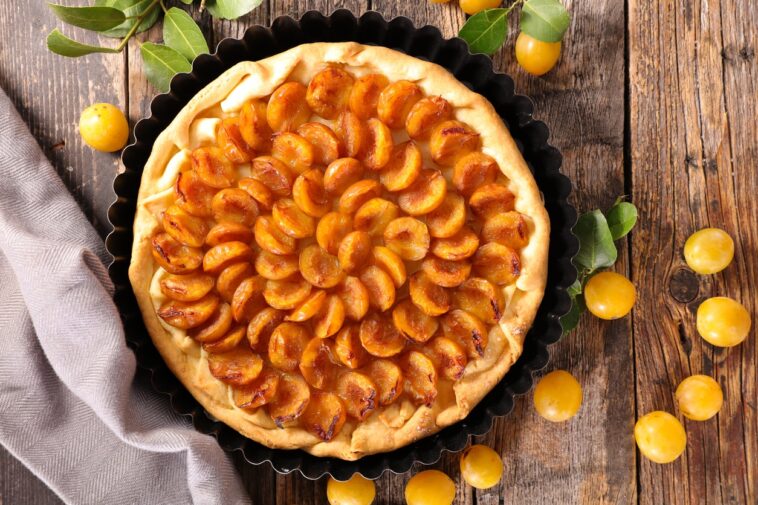In spring and summer, seasonal fruits, each more colorful and more fragrant than the last, appear on our stalls. There are many gourmets who like to use them in jams, but also in tarts full of deliciousness. The problem is that certain juicy fruits such as peaches, plums, kiwis, pineapples, apricots, pears and even red fruits tend to release a lot of water when cooking. This humidity linked to the fruit juice can then make the puff pastry or shortcrust pastry used to make the tart soggy. It then becomes quite flabby even though we generally prefer it to be very crispy. Instead of extending the cooking time (thereby running the risk of burning the filling), you can fortunately use some very effective grandmother’s tips to waterproof the dough and make your next pies a success.
And good news, some of these tips can also be used in savory preparations like a tomato pie or a juicy vegetable pie (zucchini, etc.)
1) Manage oven cooking properly
Do not hesitate to reread the instructions for your oven to check the correct positioning of the plate. Playing with its height in the oven can make all the difference in browning the dough and cooking successfully. Very often, place in the oven halfway up allows you to optimize cooking, particularly in a fan oven. Nothing prevents you from finishing the job by setting the oven to the bottom cooking option (2/3 of the cooking time). Furthermore, it is possible to opt for a thin sheet pan which allows you to obtain a very crispy dough. Finally, remember to leave the oven door ajar at end of cooking. This actually allows the moisture to evaporate. This makes the dough less likely to get soggy.
2) Cook the dough for your fruit tart blind
Blind cooking (i.e. before adding the fruity garnish and browning again) can help to get a crispier pie and less soggy. If the fruits are very humid, this may not be enough, in which case you should not hesitate to combine this method with other tips below. To blind bake the dough, simply place it in the mold and prick it. Before putting it in the oven, add beans or a smaller mold on top to prevent it from swelling.

3) Waterproof the dough with egg white
Perfect for sweet and savory tartsthis grandmother’s tip works great to create a protective anti-humidity film. It simply consists of brush the dough with beaten egg white. If you bake blind as usual, apply your egg white five minutes before the end of cooking. If you do not pre-cook the dough, be aware that you will still need to put it in the oven for a few minutes at 220°C to capture the egg white. Usually three minutes is enough here. This step is therefore very quick, but what is most attractive is that it is extremely effective in guaranteeing the tightness of the dough!
4) Line the dough with powder to absorb moisture
Sprinkling powder over the dough before adding the filling will helpabsorb fruit juice and therefore waterproof the pie crust. If you decide to try this method, you can take two different directions. First, you can choose a rather neutral tasting powder so as not to distort the flavor of the fruit. It’s also much better for a vegetable pie. THE tapiocathe semolina fine (for example for polenta) ormodified starch Here are three solutions very popular with pastry chefs.
Otherwise, for ultra-tasty sweet tarts, you can favor more greedy solutions such as the almond powder or sugar for jam. It is also possible to sift 2 tablespoons of flour and 2 tablespoons of brown sugar, and mix them before sprinkling them directly on the dough. Ideal for red fruit tarts (especially raspberries), this tip forms a fine caramel which protects the dough from excess juice. A delight!

5) Coat the fruit before baking the tart
It is possible tocoat your fruit directly with almond powderespecially if they are apples or fruits that go well with this seed. This will help absorb the juice from the fruit. Otherwise, you can also mix your fruit with lemon or orange zest.
6) Shablone the dough of your fruit tart with chocolate
To carry out this trick, we preferably use a light layer of couverture chocolate (the latter being of better quality than classic chocolate). We spread it on the dough with a brush to protect it by creating a crunchy (and infinitely delicious!) layer. To stencil the dough, you can opt if you wish for white chocolate, which is more discreet in taste than milk chocolate or dark chocolate.
For a fruit (or vegetable) tart, what is the dough recipe?

There are actually three types of dough commonly used for fruit and vegetable tarts: shortcrust pastry, shortcrust pastry and puff pastry. These three recipes, which we present to you below, offer different textures and tastes, suitable for various types of pies.
Shortcrust pastry recipe
Shortcrust pastry is the most neutral and versatile. Use as desired!
Ingredients :
250 g of flour
125 g butter at room temperature, cut into cubes
1 pinch of salt
5 cl of cold water (approximately)
The steps:
Mix flour and salt in a large bowl.
Add the cubes of butter and incorporate them into the flour, rubbing with your fingers until you obtain a sandy consistency.
Add the cold water gradually, mixing until the dough forms a ball.
Wrap the dough in plastic wrap and refrigerate for at least 30 minutes before using.
Shortcrust pastry recipe
The shortbread dough is softer and sweeter. This is the the most delicious choice for a fruit tart or a sweet tart in general (lemon meringue tart, chocolate tart, etc.). And of course, it can also be used more simply to make delicious shortbread, using vanilla sugar.
Ingredients :
250 g of flour
125 g unsalted butter at room temperature
70 g of icing sugar
1 pinch of salt
1 egg
Sugar variant: 250 g flour, 100 g sugar, 125 g butter and 1 pinch of salt.
The steps:
Sift the flour and icing sugar into a large bowl.
Add the butter cut into pieces and mix with your fingers until you obtain a sandy texture.
Add the egg and mix until the dough forms a smooth ball.
Wrap the dough in plastic wrap and refrigerate for at least 1 hour before using.
Puff pastry recipe
Puff pastry is ideal for light and crispy pies, mille-feuille, savory pies (meat or fish), croissants or even bites à la reine. While many buy the latter ready-made to avoid long and tedious folding, homemade remains possible if you have the time and the desire.
Ingredients :
250 g of flour
200 g cold butter
125 ml of cold water
1 pinch of salt
The steps:
Mix flour and salt in a bowl.
Add the cold water and mix until it forms a dough. Do not overwork the dough.
Form the dough into a rectangle, wrap in plastic wrap and refrigerate for 30 minutes.
Spread the cold butter between two sheets of baking paper to form a rectangle smaller than that of the dough.
Place the butter in the center of the dough and fold the dough into an envelope to cover the butter.
Roll out the dough into a long rectangle and fold into thirds, like a letter.
Turn the dough 90 degrees, roll it out again into a long rectangle and fold it into thirds. Refrigerate for 30 minutes.
Repeat the spreading and folding steps three more times, refrigerating between each turn.
The dough is ready to use after the last turn and a rest in the refrigerator.


